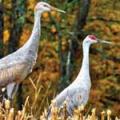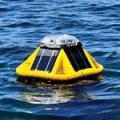Science

Sandhill Cranes Flock to Maine
Majestic sandhill cranes are appearing in increasing numbers in central Maine locations such as Smithfield and Norridgewock each fall.

Camden Buoy Data to Drive Waterfront Decisions
Buoys collect localized wave and wind data for Camden Harbor in the hopes that town officials can make informed waterfront resiliency decisions.

The Birdman of Northern Maine
In Northern Maine, Bill Sheehan is a bird’s best friend

From Maine to the Arctic
A Maine-based vessel provides a platform for multi-year Arctic research.

Krisanne Baker and the Sea
An artist and a snorkeler, Baker is also a snorkeling artist.

A Date with Hibernating Black Bears
Scientists make a wellness check inside a wintertime bear den.

In Search of the Biggest Tamarack
A significant tree with connections to boatbuilding

The Sad Tale of Maine’s Extinct Sea Mink
Researchers investigate the species known as the sea mink, which went extinct in Maine 150 years ago

Hurricane Island Unveils a New Research Station
A new state-of-the-art science lab on Hurricane Island features cutting-edge construction technologies and will be a base for cutting-edge marine research

The Fine Art of Moose Calling
Calling moose is thrilling, but it’s not for the faint of heart.






